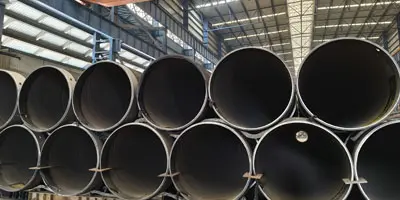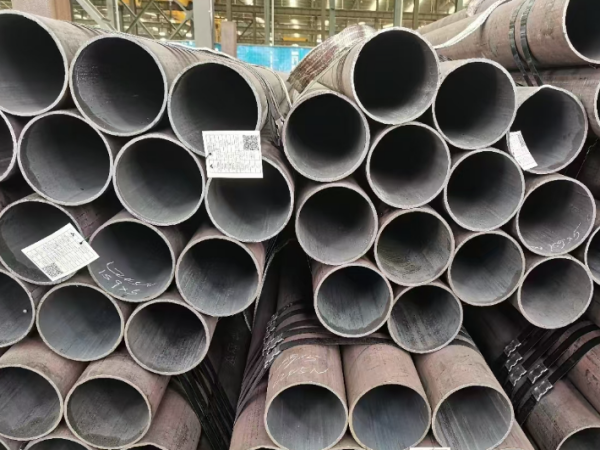When we purchase seamless steel pipes, we often encounter some professional terms that confuse us. So, what do these terms mean? What are the common terms for seamless steel pipes? Seamless steel pipes, as a widely used type of steel pipe, play an important role in many industries. Whether in oil, gas, chemicals, or construction, machinery and other industries, the quality requirements of seamless steel pipes must strictly follow certain standards and technical requirements. The following is an introduction to commonly used seamless steel pipes and technical requirements, and a detailed explanation of common terms:
What is smls pipe?
SMLS pipe stands for seamless pipe. It is a steel pipe that does not have any welds or joints along its length during the manufacturing process. SMLS pipes are made by perforating solid steel billets to form a hollow cylindrical shape, which is then stretched and rolled to the required length and thickness. This manufacturing process ensures that the SMLS pipe has a uniform structure and consistent mechanical properties.
SMLS pipes are widely used in various industries and occasions that require high strength, good durability, pressure resistance, corrosion resistance, etc. They are often used in the oil and gas industry to transport fluids and gases under high pressure and high temperature conditions. SMLS pipes are also used in power generation, chemical processing, petrochemical plants and other industrial sectors.
Technical requirements and general terms for seamless steel pipes
1. Outer diameter (OD) of steel pipes
The outer diameter refers to the diameter of the steel pipe cross section, usually in millimeters (mm). The outer diameter of a seamless steel pipe is one of its most basic parameters, which determines the strength, pressure bearing capacity and scope of application of the steel pipe. The tolerance of the outer diameter usually varies according to different standards.
2. Wall thickness (WT)
The wall thickness refers to the thickness of the steel pipe wall, which is also an important factor affecting the pressure bearing capacity and service life of the steel pipe. For seamless steel pipes, the wall thickness requirements are strict, especially when used under special working conditions such as high pressure and high temperature. The standard tolerance of wall thickness is generally also clearly specified.
The length of seamless steel pipes can be provided according to customer needs, usually with fixed length and variable length. The standard length is generally 6 meters, but it can also be customized according to specific needs.
3. Nominal size and actual size:
① Nominal size of seamless steel pipe
It is the nominal size specified by the standard, which is the ideal size expected by users and manufacturers, and is also the order size specified in the contract.② Actual size: The actual size obtained during the production process is often larger or smaller than the nominal size. This phenomenon of being larger or smaller than the nominal size is called deviation. (2) Deviation and tolerance ① Deviation: In the production process of medium and thick plate pipes, since the actual size is difficult to meet the nominal size requirements, that is, it is often larger or smaller than the nominal size, the standard stipulates that there is a certain difference between the actual size and the nominal size. The positive difference is called positive deviation, and the negative difference is called negative deviation.② Tolerance: The sum of the absolute values of the positive and negative deviations specified in the standard is used for tolerance, also known as "tolerance zone".
The deviation is squared, that is, "positive" or "negative"; the tolerance has no directionality, so it is wrong to call the deviation value "positive tolerance" or "negative tolerance".
4. Delivery length:
The length of seamless steel pipe can be provided according to customer needs, usually divided into fixed length and non-fixed length. The standard length is generally 6 meters, but it can also be customized according to specific needs.
The delivery length is also called the user-required length or the contract length. The standard stipulates the delivery length as follows:
① Common length (also known as unfixed length): Any length within the standard length range without fixed length requirements is called common length. For example, the standard for structural pipes: hot-rolled (extruded, expanded) steel pipes 3000mm~12000mm; cold-drawn (rolled) steel pipes 2000mm~10500mm.
② Measuring length: The measuring length should be within the usual length range, which is the fixed length required in the contract. However, it is impossible to cut out the absolute length in actual operation, so the standard stipulates the allowable positive deviation value for the fixed length.
Since the yield rate of the production of fixed-length pipes is much lower than that of the usual length pipes, it is reasonable for the manufacturer to ask for a price increase, which is generally about 10% on the basis of the base price.
③ Double-length: The double-length length should be within the usual length range. The contract should specify the single length and the multiple of the total length (for example, 3000mmx3, which is three times 3000mm, and the total length is 9000mm). In actual production, an allowable positive deviation of 20mm should be added to the total length, and a cut margin should be left for each single length. Taking the structural pipe as an example, the cut margin is specified as follows: 5-10mm for outer diameter ≤159mm; 10-15mm for outer diameter >159mm.
If there is no provision for the multiple length deviation and cut margin in the standard, it shall be determined by negotiation between the supply and demand parties and indicated in the contract. If the multiple length is the same as the fixed length, it will also bring a significant reduction in the yield rate of the production enterprise, and the price increase is basically the same as the fixed length.
④, Range length: The range length is usually within the range of the fixed length. When the user requires a fixed range length, it must be indicated in the contract.
For example, the fixed length of steel pipe is usually 3000-12000mm, and the range length is 6000-8000mm or 8000-10000mm. Range length
Although it is looser than fixed length and multiple length, it is much stricter than the usual length, which will also reduce the yield rate for manufacturers. Therefore, it is reasonable for manufacturers to increase prices appropriately, and the price increase is generally about 4% of the base price.
5. Steel pipe material
The material of the steel pipe is the key factor that determines its performance and scope of application. Common seamless steel pipe materials are:
Carbon steel (such as Q235, 20#, 45#, etc.): suitable for general pressure and temperature environments.
Alloy steel (such as 16Mn, 12Cr1MoV, etc.): used for special conditions such as high temperature resistance and corrosion resistance.
Stainless steel (such as 304, 316, etc.): suitable for corrosive environments.
6. Pipe end form
There are many types of pipe ends for seamless steel pipes, including flat ends, chamfered ends, threaded ends, etc. Different pipe end forms are suitable for different connection methods. For example, chamfered ends are often used for welding connections, while threaded ends are often used for threaded connections.
Uneven wall thickness:
The uneven wall thickness of steel pipes refers to the inconsistency between the cross-sectional and longitudinal wall thickness of steel pipes, resulting in uneven distribution of wall thickness in the cross-sectional and longitudinal tube bodies. In order to control this uneven wall thickness, the steel pipe standard usually stipulates the allowable wall thickness unevenness index, which generally does not exceed 80% of the wall thickness tolerance (determined by negotiation between the supply and demand parties).
7. Ovality:
Ovality refers to the uneven outer diameter on the cross section of a circular steel pipe, which is specifically manifested as the difference between the maximum outer diameter and the minimum outer diameter. In order to control the ovality, the standard usually stipulates that the maximum ovality shall not exceed 80% of the outer diameter tolerance (determined by negotiation between the supply and demand parties).
8. Curvature:
The curvature of a steel pipe refers to the degree of curvature in its length direction. There are usually two measurement methods in the standard:
Local curvature: Use a one-meter ruler to measure the maximum curvature of the steel pipe. The chord height is the local curvature, and the unit is mm/m. For example, a curvature of 2.5mm/m means that the curvature of the steel pipe within 1 meter is 2.5mm.
Total bending length: Pull a thin rope at both ends of the steel pipe, measure the maximum chord height of the steel pipe bending (in mm), and then convert it into a percentage of the total length of the steel pipe. For example, if the length of the steel pipe is 8 meters and the maximum chord height is 30mm, the curvature is 0.03/8m×100% = 0.375%.
9. Surface quality requirements
The surface requirements of seamless steel pipes usually include no cracks, no bubbles, no scratches and other defects. The surface quality directly affects the mechanical properties and corrosion resistance of the pipeline. The surface can be polished, sandblasted, etc. to improve the quality.
10. Mechanical properties of steel pipes
The mechanical properties of seamless steel pipes include:
Tensile strength: refers to the maximum tensile force that the material can withstand in a tensile test, usually expressed in MPa (megapascals).
Yield strength: is the stress point where the material begins to undergo plastic deformation, usually used to evaluate the safety of the pipe under stress conditions.
Elongation: the amount of elongation before the material breaks after being stretched, reflecting the plasticity of the material.
Standard requirements
Different seamless steel pipe production standards have different technical requirements. Common standards include:
GB/T 8162: Seamless steel pipes for general structures.
API 5L: Steel pipes for oil and natural gas transportation.






 English
English Español
Español بالعربية
بالعربية











 Phone :
Phone :  Whatsapp :
Whatsapp :  Email :
Email : 


